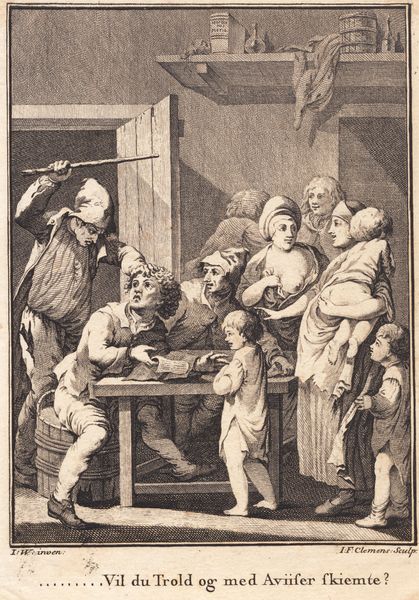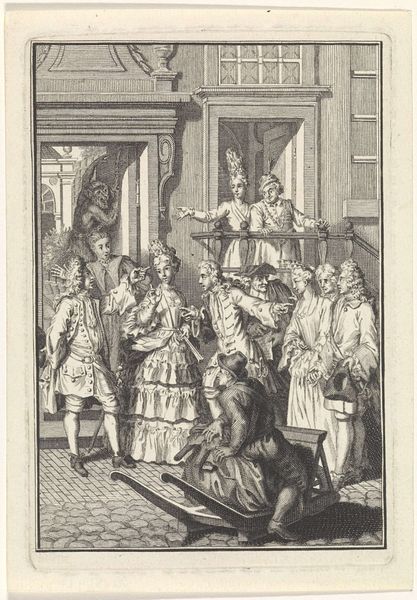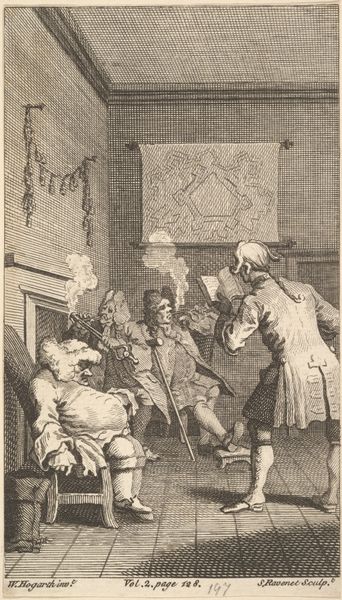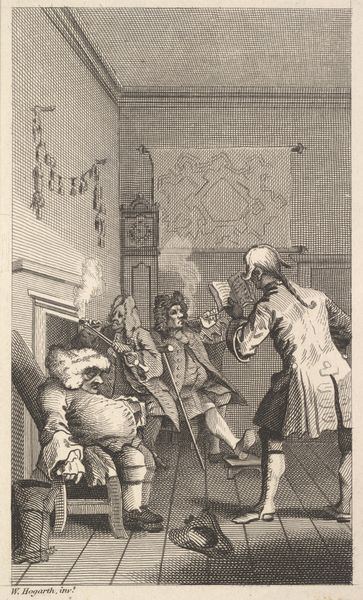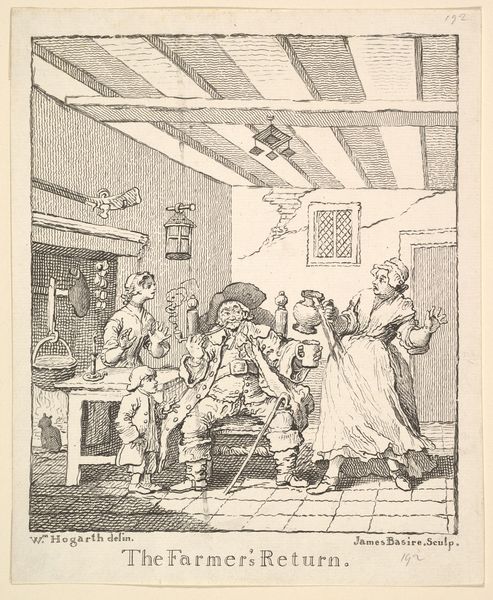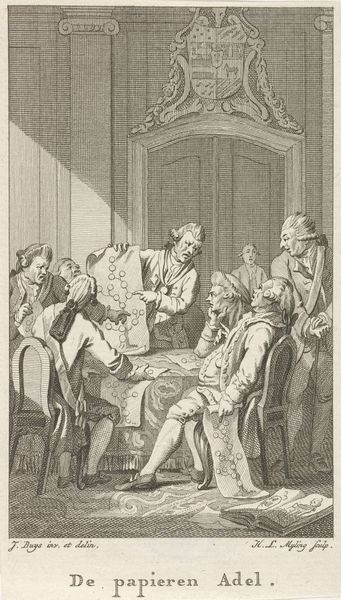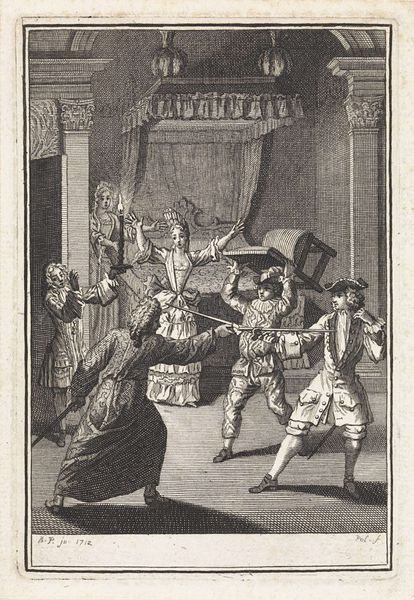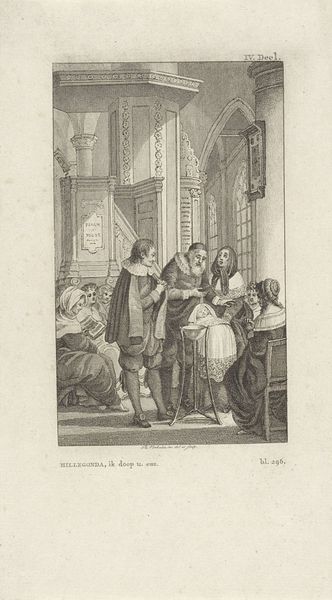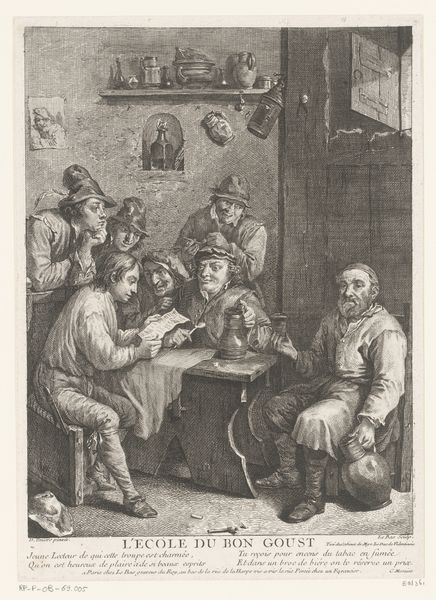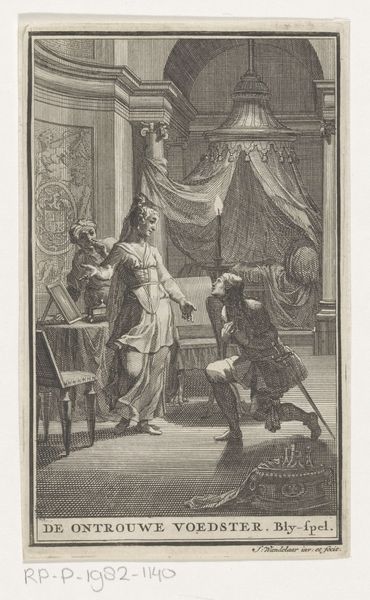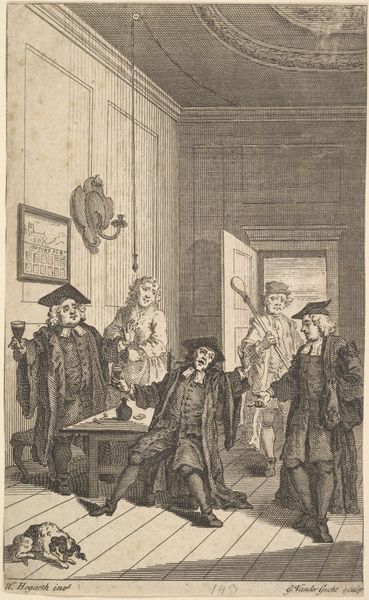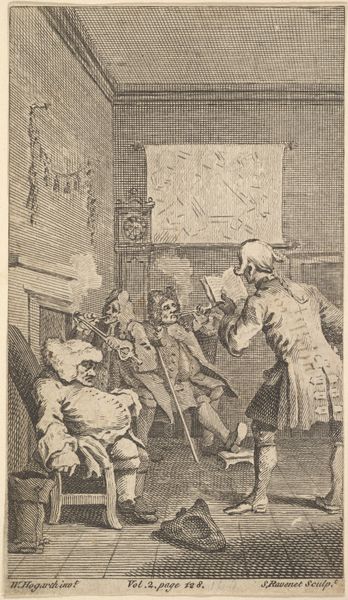
Frontispiece to Moliere's "L'Avare" (The Miser) 1732
0:00
0:00
drawing, print, etching
#
drawing
#
narrative-art
#
baroque
# print
#
etching
#
genre-painting
Dimensions: sheet: 5 1/4 x 3 1/16 in. (13.4 x 7.7 cm)
Copyright: Public Domain
Editor: So, this is the frontispiece to Moliere's "L'Avare" or "The Miser," a print from 1732 by John Vandergucht. It's so detailed, a whole scene unfolding. It gives a real sense of theatrical tension. What do you see in this piece, especially considering its historical context? Curator: This print acts as a powerful piece of social commentary, situated within the world of theater and performance of the 18th century, but engaging with a centuries-old problem. The scene captures a moment of upheaval. Consider how the figures are arranged; notice the miser, clinging to his possessions while chaos erupts around him. The artist is using Moliere's critique of greed to ask audiences to examine their own relationship to money and power. Do you think the rendering flattens class divisions or, instead, critiques them? Editor: I guess it highlights them. The rich are agitated and in control and… not victims. It’s all about power, even when the characters seem sympathetic. Curator: Exactly. Look at the female characters huddled together; are they mere onlookers, or are they actively resisting the patriarchal structures represented by the miser's obsession? Consider the fact that Moliere wrote during a time of rigid social hierarchies. Vandergucht translates this world through line and composition to allow for questions of morality and agency to bubble to the surface. Editor: That’s interesting – I hadn't thought about their active roles within a social context, I was seeing a comedy instead of thinking about their intersectional resistance! Curator: It is both! Art reflects its society, critiques it, and hopefully opens space for change. Editor: This has given me a new framework to interpret not just this image but others from the era! Curator: Precisely, and frameworks are always useful tools.
Comments
No comments
Be the first to comment and join the conversation on the ultimate creative platform.
